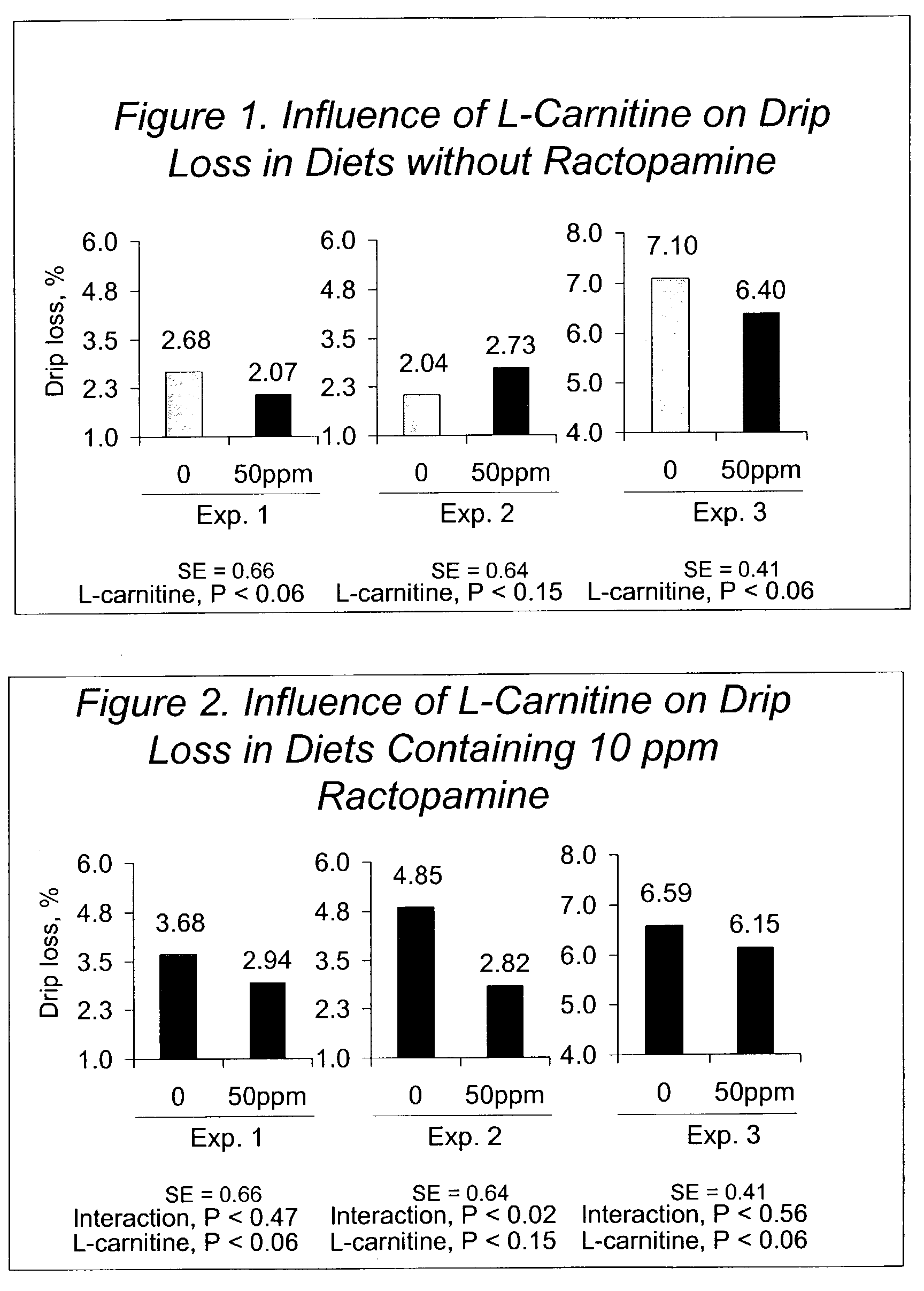Method for improving quality of meat by supplementing pig diets and concentrates used therefor
a technology of pig diet and concentrate, applied in the field of pig farming, can solve the problems of increased pork color, increased cut muscle, and increased liquid purge loss, and achieve the effects of reducing the incidence of aging
- Summary
- Abstract
- Description
- Claims
- Application Information
AI Technical Summary
Benefits of technology
Problems solved by technology
Method used
Image
Examples
example 2
[0052] Because of the dramatic and potentially economically important changes in pork quality observed in the data of Example 1, a second trial was conducted to confirm these observations. This experiment was conducted in the same facility as Example 1 and used the same diet in Table 1. The primary difference was that the 4.5 g / ton ractopamine level was not included; i.e., only 0 or 9 grams / ton ractopamine was combined with either 0, 25, or 50 ppm of added L-camitine. Results listed below in Table 3 confirm the positive effects of feeding L-camitine in combination with ractopamine on pork firmness, selected color traits, and drip loss.
5TABLE 3 Carcass Characteristics of Finishing Pigs fed Carnitine and Paylean.sup.a Paylean, g / ton 0 9 Probability (P<) Carnitine, ppm Paylean x Carnitine Item 0 25 50 0 25 50 SEM Carnitine Paylean Carnitine Linear Quadratic Visual cobra 3.20 3.10 2.90 2.75 2.75 2.80 0.16 0.52 0.02 0.72 0.93 0.43 Firmness.sup.b 2.59 2.44 2.34 1.99 2.59 2.34 0.15 0.04 0....
example 3
[0054] Similar results of the combined effects of L-carnitine and ractopamine on pork quality indicators have been observed in follow-up studies. FIGS. 1 and 2 summarize the effects of added L-carnitine with or without ractopamine. FIG. 1 shows that in three different experiments added camitine at 50 ppm has a small positive effect on drip loss in two of the three studies. However, as shown in FIG. 2, adding camitine to diet containing ractopamine tends to have a greater net positive effect on reducing (improving) pork drip loss.
PUM
| Property | Measurement | Unit |
|---|---|---|
| Fraction | aaaaa | aaaaa |
| Fraction | aaaaa | aaaaa |
| Fraction | aaaaa | aaaaa |
Abstract
Description
Claims
Application Information
 Login to View More
Login to View More - R&D
- Intellectual Property
- Life Sciences
- Materials
- Tech Scout
- Unparalleled Data Quality
- Higher Quality Content
- 60% Fewer Hallucinations
Browse by: Latest US Patents, China's latest patents, Technical Efficacy Thesaurus, Application Domain, Technology Topic, Popular Technical Reports.
© 2025 PatSnap. All rights reserved.Legal|Privacy policy|Modern Slavery Act Transparency Statement|Sitemap|About US| Contact US: help@patsnap.com

